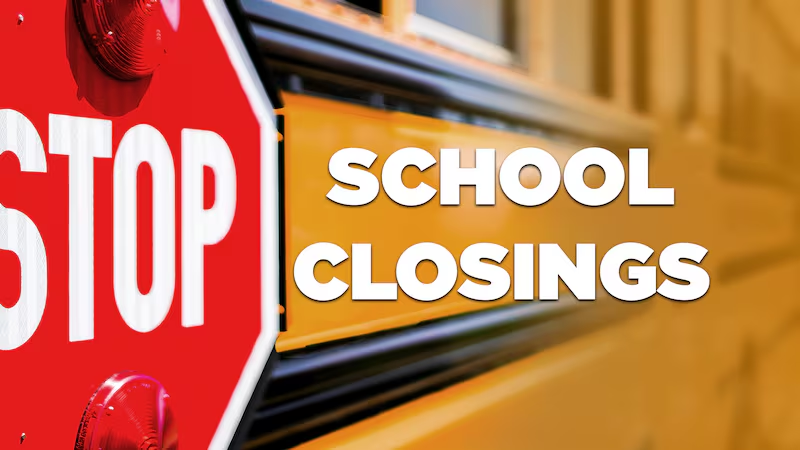Over the years, school closings in Georgia have become a recurrent topic of discussion due to various factors, including severe weather conditions, the COVID-19 pandemic, economic constraints, and other logistical issues.
In this article, we’ll take a deep dive into the causes behind school closings in Georgia, the short-term and long-term impacts on students and communities, and what the future holds for educational institutions in the state.
1. Causes of School Closings in Georgia
a. Weather-Related Closures
Georgia’s climate, while largely temperate, can be prone to extremes, especially during winter and hurricane seasons. Snow and ice storms can make roads impassable, particularly in northern Georgia, where snowfall can be more severe. Tornadoes and hurricanes also pose threats, leading to periodic closures in affected regions.
One of the most notable examples occurred in January 2014, when a snowstorm, later dubbed “Snowpocalypse,” paralyzed Atlanta and surrounding areas, leading to the closure of multiple schools across the state for days.
Similarly, in recent years, hurricanes such as Hurricane Irma (2017) and Hurricane Michael (2018) forced schools across Georgia to close as a precautionary measure, especially in southern coastal areas.
b. Health Crises (COVID-19 Pandemic)
The global COVID-19 pandemic caused unprecedented school closings across the world, and Georgia was no exception. Beginning in March 2020, schools across the state were shuttered as part of public health measures aimed at slowing the spread of the virus. This led to a shift to virtual learning for the remainder of the 2019-2020 academic year and into the 2020-2021 school year.
Many schools faced prolonged closures and intermittent reopenings based on local infection rates. The challenges of remote learning, access to technology, and maintaining engagement among students highlighted significant disparities in the education system, particularly in rural areas.
c. Economic and Budgetary Constraints
In some cases, school closings in Georgia are linked to economic issues. Budget cuts at the state or local level can lead to the consolidation of schools, particularly in areas with declining student populations.
Rural schools are particularly vulnerable to closures due to shrinking enrollments and higher per-student costs.
For instance, several rural school districts in Georgia have faced closures or mergers over the past decade as a means of reducing costs and reallocating resources more efficiently. These consolidations, while fiscally necessary, often come at the expense of community identity and local access to education.
d. Infrastructure and Maintenance Issues
Another factor leading to temporary school closures is the state of infrastructure in some Georgia schools. Aging buildings, structural issues, and inadequate facilities may require schools to shut down temporarily for repairs. Over time, deferred maintenance has become a pressing issue, especially in underfunded districts.
2. Short-Term and Long-Term Impacts of School Closings
a. Impact on Students
School closings, whether temporary or permanent, have a profound impact on students. In the short term, closures disrupt the learning process, leading to potential delays in curriculum coverage and learning outcomes.
This was particularly evident during the COVID-19 pandemic when many students struggled to adjust to online learning platforms.
In the long term, repeated or extended closures can widen educational disparities, especially among students from low-income families who may lack access to reliable internet, technology, or a conducive learning environment at home.
The “learning gap” that emerged during the pandemic is expected to have lasting effects on academic achievement, with students in underserved communities disproportionately affected.
b. Impact on Families
Parents and families are directly impacted by school closings, as they must find alternative childcare arrangements, particularly during unexpected closures due to weather or health concerns. This can place a strain on working families who may not have the flexibility to stay home with their children.
For rural families, the permanent closure of a local school can result in longer commutes for students, which can be costly and time-consuming, further straining household budgets and schedules.
c. Impact on Communities
The closure of schools, especially in rural or small communities, can have a far-reaching impact beyond education. Schools often serve as community hubs, hosting events and fostering social cohesion.
When a school closes, it can erode a sense of community identity and lead to population decline as families relocate to areas with better educational opportunities.
In urban areas, school closings can lead to overcrowding in other schools, creating a host of logistical challenges such as larger class sizes, strained resources, and difficulty maintaining individualized attention for students.
- 3.The Future of School Closings in Georgia
a. Adapting to Climate and Weather
As extreme weather events become more frequent due to climate change, schools in Georgia may need to develop more robust contingency plans to handle closures. Investing in better infrastructure and technology for remote learning can help minimize the disruption caused by weather-related closures.
Additionally, better coordination with state agencies and local governments can ensure timely and effective communication during emergencies.
b. Rethinking Education Funding and Infrastructure
One of the key challenges facing Georgia’s education system is the allocation of resources. In the face of budget cuts, school closures may seem like a quick fix, but long-term solutions require investment in both urban and rural education. Increased funding for school repairs, modernization, and maintenance can help prevent closures due to infrastructure failure.
Conclusion
School closings in Georgia, whether due to weather, health crises, or economic factors, have far-reaching effects on students, families, and communities. The state must continue to adapt to these challenges by investing in education infrastructure, technology, and funding to mitigate the long-term consequences of closures.
As climate change and other uncertainties loom on the horizon, it is crucial for Georgia’s education system to remain resilient, ensuring that all students have access to quality education, no matter the circumstances.







